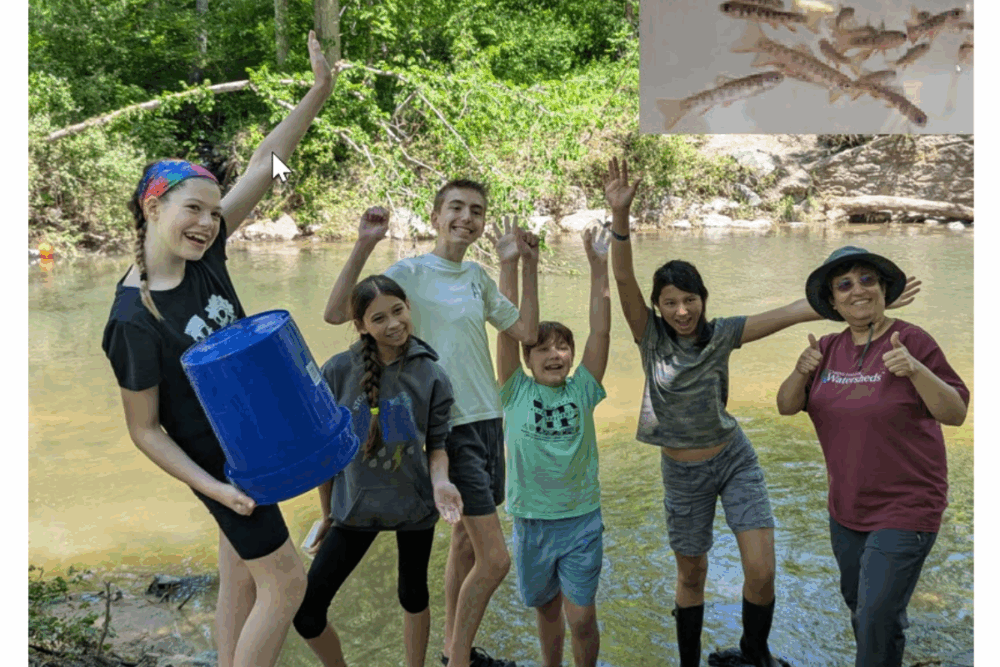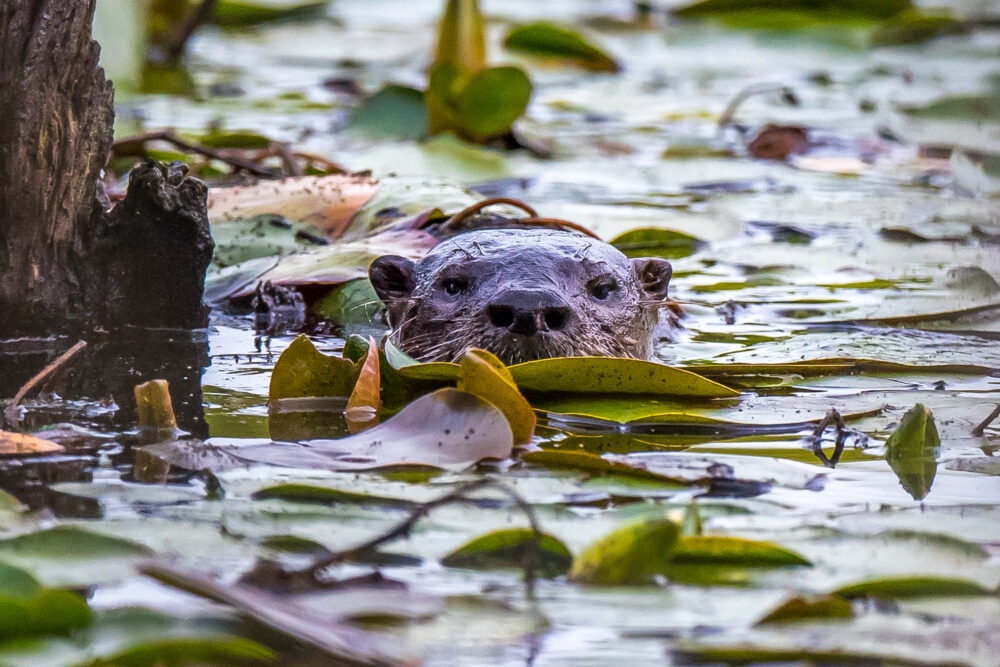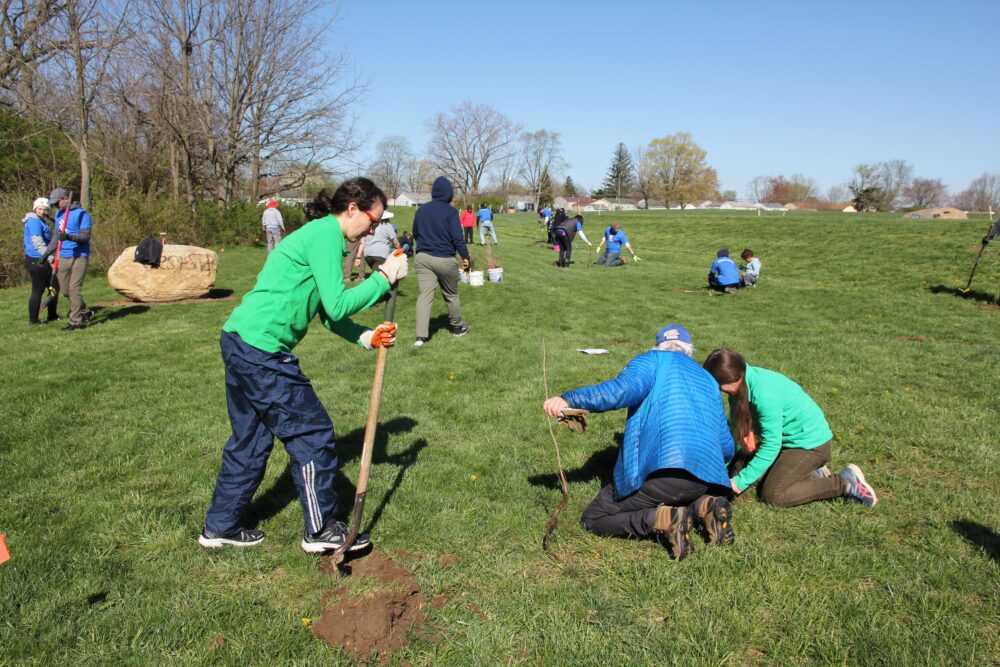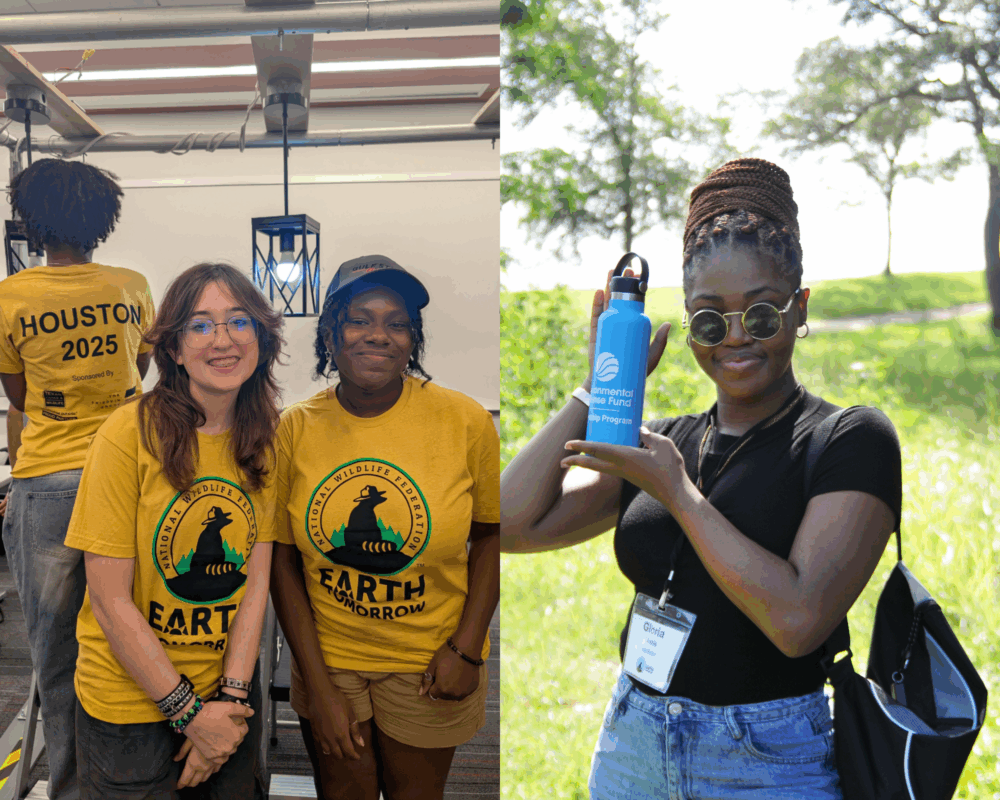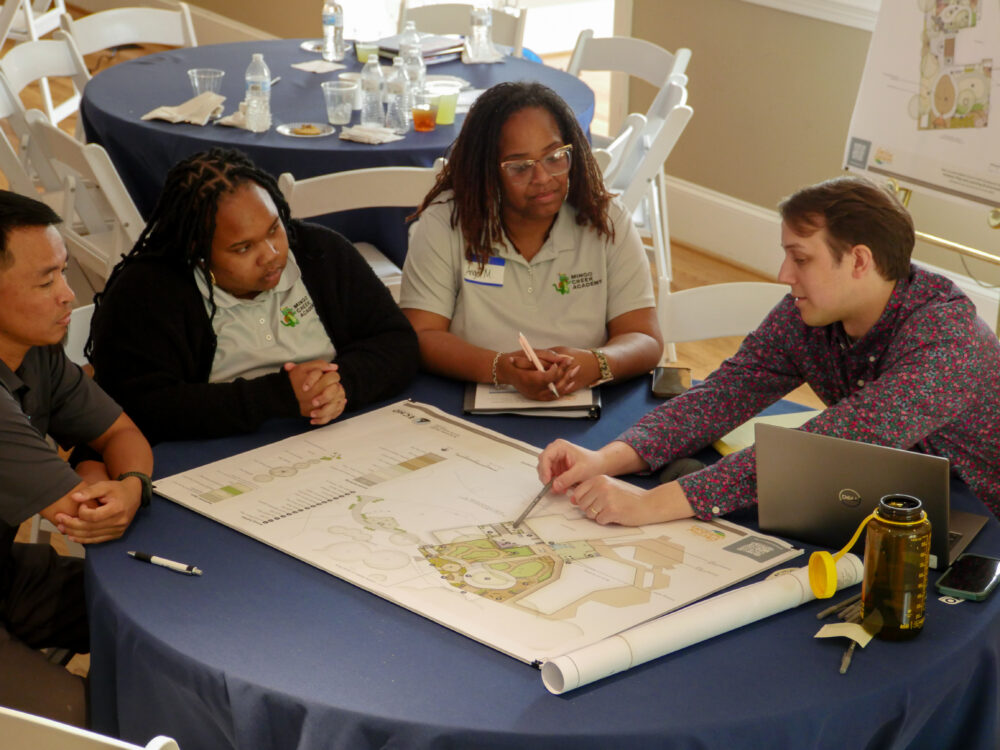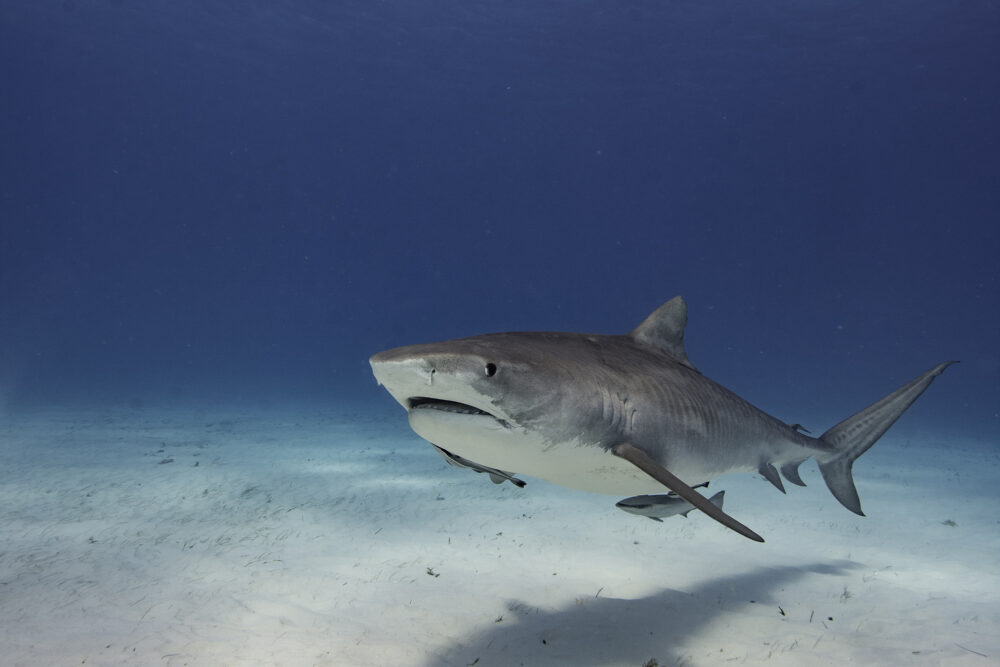We have much more to do and your continued support is needed now more than ever.
12 Places to See Amazing Animals
Wherever you live in the U.S., you are near fabulous places for wildlife watching. Our friends at grandparents.com put together this list to help you find a spot near you:
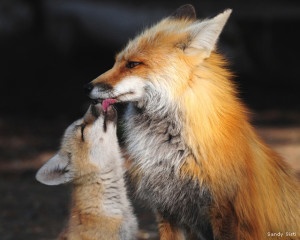
17 miles from downtown Fort Worth
With more than 3,600 acres and 20 miles of hiking trails, the FWNC&R is actually the convergence of two major ecological environments — the Fort Worth (Grand) Prairie and the Western Cross Timbers — where grassland meets forest. Bison, deer, copperhead and cottonmouth snakes, herons, egrets, and even the rare bobcat call this refuge home. Visit the website to see the Nature Center’s calendar and to learn about various programs, including naturalist-led hikes, bird-watching, and canoe tours.
Anza-Borrego Desert State Park – Banner, Calif.
71 miles from San Diego
Sure, Yosemite and Big Sur get most of the attention, but the 500 miles of Anza-Borrego Desert State Park in the south make up the largest state park in California. It’s home to 12 wilderness areas and hundreds of miles of hiking trails through California’s Colorado desert. The park’s rocky and palmy landscapes play host to kit foxes, mule deer, roadrunners, golden eagles, iguanas, chuckwallas, and even the red diamond rattlesnake. Pack for a day’s hike and bring binoculars to spot birds and the bighorn sheep.
Arthur R. Marshall Loxahatchee National Wildlife Refuge – Boynton Beach, Fla.
23 miles from West Palm Beach, 55 miles from Miami
The more than 221 square miles of the Loxahatchee Refuge are only minutes from downtown West Palm Beach. This stretch of saw-grass marsh, sloughs, and wet prairie habitat offers all the natural wonder of the Everglades at an accessible park. Home to American alligators, wood storks, red foxes, butterflies, and the critically endangered Everglade snail kite, the Loxahatchee is teeming with life. As many as 257 species of birds use the wetlands annually; you can see them by walking, biking, canoeing, or using the refuge’s boat ramps and fishing platforms.
Minnesota Valley National Wildlife Refuge – Bloomington, Minn.
15 miles from Minneapolis
Located along the Mississippi Flyway, the MVNWR hosts a cornucopia of winged creatures — 226 to be exact, including the wood duck, American redstart, great blue heron, American goldfinch, and even the ever-elusive bald eagle. About 50 mammals, such as red squirrels, coyotes, red foxes, muskrats, beavers, woodchucks, and raccoons also call MVNWR home. With a variety of educational workshops and tours, you and your grandchildren are sure to catch a glimpse of something wild.
The Wilds – Cumberland, Ohio
74 miles from Columbus
Imagine African animals roaming the Ohio plains. If you can, you’ll soon recognize The Wilds as one of the most innovative wildlife conservation centers in the world. It’s also enormous; there are almost 10,000 acres of protected land for endangered species from half a world away to roam and thrive. Take a jeep-guided tour for close contact with giraffe, zebra, rhino, and buffalo. The observation deck of the birding station at Jeffrey Point is a perfect place to spend some quiet time keeping a keen eye out for ospreys returning for the spring; if you’re more adventurous, go for a wild ride on one of the park’s challenging bike trails.
Merritt Island National Wildlife Refuge – Titusville, Fla.
41 miles from Orlando
This refuge was formed when NASA bought a huge tract of land where it was to construct the Kennedy Space Center in 1962. When much of the development was deemed unnecessary, the remaining 140,000 acres were turned over to the U.S. Fish and Wildlife Service. On hiking trails, from observation decks, or in canoes or kayaks, you can explore the coastal dunes, saltwater estuaries and marshes, and freshwater impoundments. Thousands of fish, birds, mammals, amphibians, reptiles, and plants call the MINWR home. You and your grandkids might see West Indian manatees, American alligators, or some of the five species of endangered turtles.
The Center Children’s Farm – Palos Park, Ill.
26 miles from Chicago
Guides at The Center Children’s Farm lead tour groups on an interactive experience with chicks, ducklings, goslings, piglets, calves, goat kids, and lambs — your grandkids may even be lucky enough to see an animal being born. The farm is a completely hands-on experience that puts you and your grandkids inside the pen with some of their favorite farm animals.
Jamaica Bay Wildlife Refuge – Howard Beach, N.Y.
13 miles from Manhattan
With approximately 9,155 acres, Jamaica Bay is the largest natural open space in New York City. Part of Gateway National Recreation Area, Jamaica Bay is home to red foxes, ospreys, monarch butterflies, horseshoe crabs, seals — even the endangered Peregrine falcon has made a substantial return to New York City in recent years. Walk a self-guided trail or hop on the Rockaway Gateway Greenway bike trail for another way to see the park. Who knew such diverse and exciting wildlife was accessible in the Big Apple?
John Heinz National Wildlife Refuge at Tinicum – Philadelphia, Pa.
8 miles from Philadelphia
Despite its urban location, the Heinz NWR is home to more than 300 species of birds like egrets, sandpipers, warblers, and a large variety of ducks; all use the park as a pit stop as they cruise the Atlantic Flyway during spring migration. Besides the diverse avian population, foxes, deer, opossums, muskrats, raccoons, and many other small animals take refuge here. This land is also essential for the preservation of the state-endangered Red-bellied turtle and Southern leopard frog. Tell your grandkids to keep their eyes peeled for these elusive creatures. A fantastic way to see the Heinz NWR is by canoe through the 4.5-mile stretch of Darby Creek that runs through the park.
Plains Conservation Center – Aurora, Colo.
24 miles from Denver
The PCC is a combination outdoor education facility and state-designated natural area spanning approximately 8,894 acres. One amazing way to experience the center is by signing up for a Walk With a Naturalist and let the eagle-eye of Art Elser guide you toward some wild sightings — owls, prairie dogs, coyotes, pronghorns, hawks, and songbirds. Along the way, you and your grandchildren may even run into some rare prairie reptiles and amphibians. End your expedition at the indoor classroom to see, touch, and feel animal feathers, pelts, and bones. It’s the total animal experience.
Richardson Bay Audubon Center & Sanctuary – Tiburon, Calif.
13 miles from downtown San Francisco
Nestled below the Marin highlands of Sausalito in the San Francisco Bay area is the smaller and wilder Richardson Bay. The area serves as an important feeding ground on the Pacific Flyway for thousands of migratory birds and supports an ecosystem teeming with natural diversity. You and your family can wander the tiny half-mile woodlands trail, highlighted by the Hummingbird Garden. Visit the website for weekly family programs, organized tours, and educational opportunities.
Rosse Posse Acres Elk Farm – Molalla, Ore.
36 miles from Portland
The Ross family’s (Rosse Posse is just the family nickname) 52-acre elk farm is home to about 70 head of elk with huge racks. Learn the difference between horns and antlers. Spend some time watching and learning the sounds, smells, and moods of elk — even get close enough to feed them. End your tour at what is sure to be the highlight of the day for the grandkids, the petting zoo, which features pygmy goats, miniature donkeys, a miniature horse, chickens, and Tucker, the lovable wallaby. And before you leave, make sure you try wapiti, or elk meat. It’s delicious!
For more great wildlife ideas:
- Discover Wildlife With Your Grandkids
- Webcams Gone Wild
- Check out our City Guides for activity ideas in your area
This article originally appeared on Grandparents.com and was written by Zachary Collinger.



